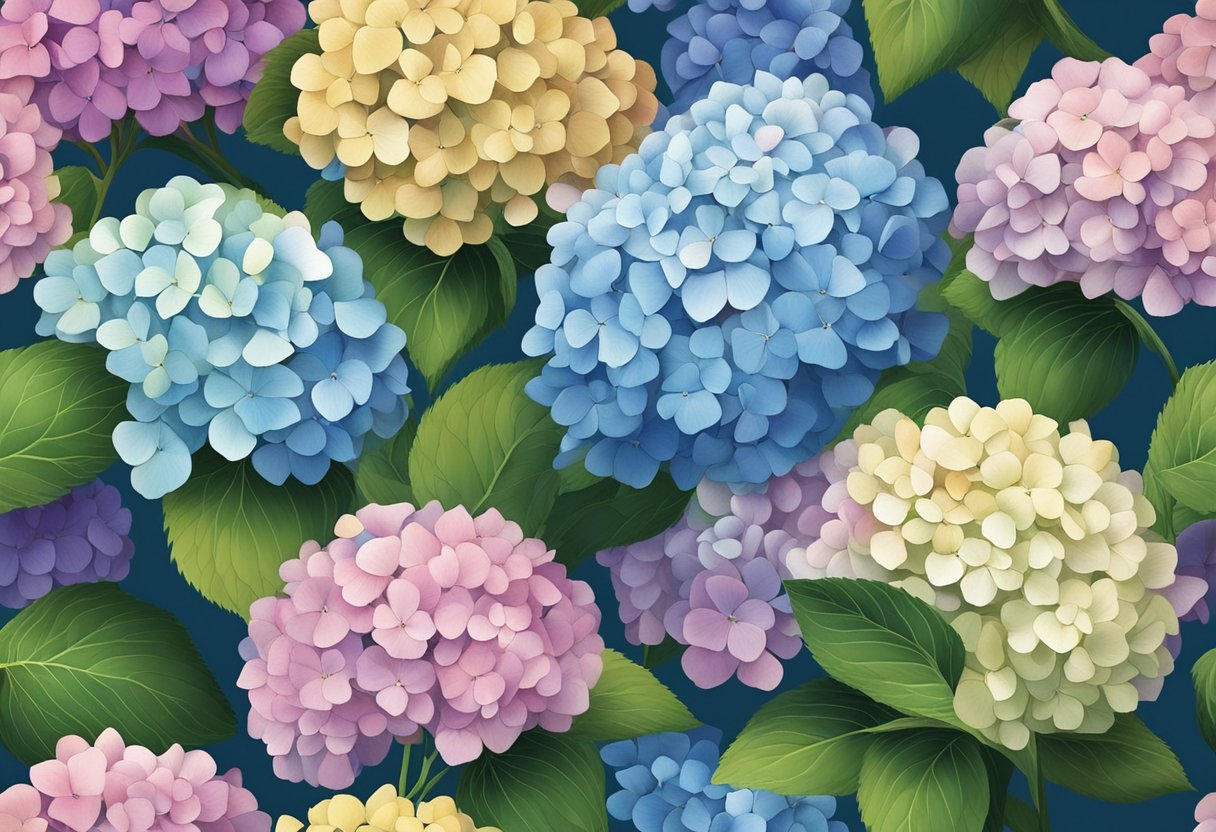Identifying the type of hydrangea in your garden can be fascinating and practical. As a gardener, I’ve come to appreciate the nuances that distinguish hydrangea species, a vital step if you’re aiming to tailor care or achieve specific aesthetic goals. Each variety has its unique characteristics and requirements, but understanding the basics of flower form, leaf shape, and growth patterns can set the stage for deeper garden knowledge.

In my experience, climate often plays a significant role in the health and bloom of your hydrangeas. For instance, smooth hydrangeas thrive in colder regions, whereas bigleaf hydrangeas prefer warmer climates. These climatic preferences are crucial to consider, as they influence not only the survival of hydrangeas but also their flowering schedule and maintenance routines.
Knowing whether your hydrangea blooms on old or new wood, for example, directly impacts when to prune for optimal growth and blooms. The mountain hydrangea, a variety known for its bud hardiness, typically blooms on old wood, while other varieties like the ‘Annabelle’ hydrangea bloom on new wood. This knowledge ensures that you prune at the right time, preventing mistakenly cutting off future blooms.
JUMP TO TOPIC
Hydrangea Varieties and Species
In my experience with gardening, correctly identifying hydrangea species is essential for proper care and pruning. Each species has unique flowering habits and growth requirements.
Understanding Mophead and Lacecap Hydrangeas
Hydrangea macrophylla, commonly known as Bigleaf hydrangea, encompasses both Mophead and Lacecap varieties. Mophead hydrangeas, due to their large, round flower heads, are often called French hydrangeas. Lacecap hydrangeas feature flatter flower heads with a center of fertile flowers surrounded by showy, sterile ones. Both types bloom on old wood, so pruning should occur right after flowering to not disrupt next season’s blooms.
Exploring Panicle, Smooth, and Oakleaf Hydrangeas
The differentiating characteristics of Panicle (Hydrangea paniculata), Smooth (Hydrangea arborescens), and Oakleaf (Hydrangea quercifolia) hydrangeas are quite distinctive in my observation. Panicle hydrangeas are known for their cone-shaped flowers and ability to flower on new wood. Smooth hydrangeas, like the widely known Annabelle, boast large, white blooms and also flower on new wood. Oakleaf hydrangeas, recognizable by their oak leaf-shaped foliage, display large panicles of white flowers that gradually turn to a rosy-pink as they age, and they bloom on old wood.
Unique Characteristics of Climbing and Mountain Hydrangeas
Climbing hydrangea (Hydrangea petiolaris) is an excellent species for vertical spaces in a garden, as it climbs walls and fences with ease. It produces large, white lacecap-style blooms and requires minimal pruning. Mountain hydrangea (Hydrangea serrata), akin to Lacecap hydrangeas, is more cold-hardy, making it a suitable choice for cooler regions. It also blooms on old wood and showcases smaller flower clusters than its relative, the Bigleaf hydrangea.
Cultivation and Care for Hydrangeas
Hydrangeas are versatile flowering shrubs that add color and vibrancy to any garden. With the right soil, water, light, and pruning, they can thrive and produce stunning blooms. Properly caring for hydrangeas is essential for robust growth and captivating flowers season after season.
Optimal Soil Conditions for Hydrangea Health
For hydrangeas, soil that is rich in organic matter provides an excellent foundation for healthy growth. I prefer soil that is moist but well-drained to prevent waterlogging, which can harm the plant. The pH level of the soil can influence the color of hydrangea flowers; for instance, acidic soil can turn the flowers blue, while alkaline soil tends to produce pink flowers. Adding sulfur can increase the acidity, while applying lime makes the soil more alkaline if you’re aiming to adjust flower colors.
Light and Water Requirements
Lighting conditions for hydrangeas can dictate their vitality. In my experience, most hydrangeas prefer partial shade, though they can withstand full sun in cooler climates. Too much sun can scorch their leaves, whereas too little can impede bloom production. As for water, hydrangeas enjoy consistent moisture, but it’s critical to avoid overwatering. I ensure to water them deeply but less frequently to foster strong roots; this is particularly important during drought conditions.
Pruning Techniques and Bloom Maintenance
Pruning is vital for keeping hydrangeas healthy and encouraging them to bloom. Different species have varying pruning needs. Some, like the bigleaf hydrangea, bloom on old wood and should be pruned after flowering. Others, like the panicle hydrangea, bloom on new wood and are best pruned in late winter or early spring before growth begins. I always use sharp, clean pruning tools to make precise cuts, which helps prevent disease and encourages new growth.
Hydrangea Color and Bloom Characteristics
I determine the type of hydrangea by examining its color, bloom time, and flower characteristics.
Hydrangeas are known for their captivating range of colors and flower heads that can significantly vary among species. The color palette for these flowers includes blue, white, pink, red, purple, and sometimes green.
💥 Bloom Time: Most hydrangeas bloom from summer to fall, though the exact timing can depend on the variety and local climate.
I often find that blue flowers in hydrangeas are typically a sign of acidic soil. To maintain or change the color of blue or pink hydrangeas, I modify the pH level of the soil. For a more blue hue, I ensure the soil is more acidic, while a more alkaline soil will shift the flowers towards pink.
| Color | Bloom Time | Flower Shape | Soil pH Influence |
|---|---|---|---|
| Blue/Pink | Summer-Fall | Mophead or Lacecap | Yes |
| White | Summer | Panicled or Annabelle | No |
| Red/Purple | Summer-Fall | Mophead or Lacecap | Acidic for more vibrancy |
The flower heads are also indicative of the type of hydrangea. Mophead types consist of large, round flower heads that are showy and dense, while Lacecap types display flatter flower heads with a center of subdued fertile flowers surrounded by more ostentatious sterile florets.
For the best display, I plant hydrangeas in areas that receive morning full sun and afternoon shade. This ensures vibrant color, robust bloom, and healthy, heart-shaped leaves.












